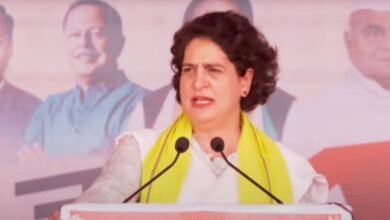The nexus between Religion and State: Why erecting statues of Netaji Bose means a little in ‘modern India?’
Lately, the rightwingers of India have been showcasing unprecedented affection toward Netaji while discarding his inclusive ideology

We are living in confusing times. On January 23rd, 2021, on Netaji’s 125th Birth Anniversary, an event was held at Kolkata’s Victoria Memorial. In the presence of Prime Minister Modi, a section of the audience sloganed “Jay Shri Ram” to allegedly offend Bengal’s Chief Minister Mamata Banerjee. The Prime Minister had zero words to condemn such misplaced sloganeering on the auspicious day.
In the recently released biopic of Vinayak Savarkar, the movie makers made the outrageous claim that Netaji Bose, Bhagat Singh, and Khudiram Bose drew inspiration from the “Hindutva flagbearer!” Yes, they even mentioned Bhagat Singh, a self-proclaimed atheist who subscribed to Marxism and read Vladimir Lenin’s writings before allowing the noose to adorn his neck. He, too, was apparently devoted to “Hindutva!”
There have been repeated attempts by the RSS (Rashtriya Swayamsevak Sangh) and the BJP (Bharatiya Janata Party) to claim Netaji’s grand stature for themselves, to belittle Mahatma Gandhi and his contribution to India’s independence.
We shall illustrate Subhash Chandra Bose’s take on “Communalism and the nexus between religion and state” via this article. The goal here is not to adhere to a political ideology. We shall hold a yardstick to reflect how far our nation has treaded from the path envisaged by the architects of modern India.
Netaji Bose’s take on “Religion and State”:
The year was 1943, and Netaji Subhash Chandra Bose had busied himself with the administration of Azad Hind Fauj in Singapore with the eternal motive of uprooting British imperialism from the Indian turf. To set his vision straight and recuperate from the arduous task of strategising with the Azad Hind Fauj, Netaji would sometimes relish the tranquillity of a nearby Ramkrishna Mission and meditate.
During one such visit to the Ramakrishna Mission, Brijlal Jaiswal, an Indian capitalist based in Rangoon and supplier to the Azad Hind Fauj, approached Netaji and requested him to attend a ceremony at the Gujarati Chettiar’s Ambabai Mandir in Singapore. Jaiswal mentioned that the Chettiars were keen to donate some wealth for the operation of Azad Hind Fauj but demanded Netaji to be present in a religious ceremony and deliver a speech before the trustees handed him the donation in the Mandir premises.
Netaji comprehended the condition and said, “I can never attend a religious ceremony wearing the Azad Hind Fauj regalia. When I come here (to Ramakrishna Mission) to connect with my spiritual side, it is a personal and covert nuance of my life. But when I wear the Fauji regalia, I have no religion.”
Jaiswal was perplexed at Netaji’s reply and asked him, “Aren’t you a Hindu then?“
Netaji replied with a coy smile, “I have two identities: One, Subhash Chandra Bose, who presently sits before you and is a Hindu. And the second is Netaji Subhash Chandra Bose, who is only an Indian. If you want only Subhash Chandra Bose to attend the ceremony, please don’t expect me to collect any donations for our Fauj. However, if you wish Netaji Subhash Chandra Bose to attend this ceremony, I request an invitation for my fellow comrades:
- GS Dhillon, who is a Sikh;
- SA Iyer, who is a Christian;
- Habib ur Rahman, who is a Mussalman;
Would you still invite me?”
Brijlal Jaiswal, an orthodox Hindu, was put in a dilemma. For decades, none but Hindus had ever stepped within the temple premises! However, two days later, Jaiswal returned to Netaji with a few other trustees and assured him they would invite all his colleagues at the Azad Hind Fauj to the ceremony, irrespective of their caste, religion, and creed.
Later, Netaji attended the function with his comrades, who were showered with flowers and accepted the donation issued by the Chettiars for Azad Hind Fauj.

In a speech that bewitched the spectators inside the temple, Netaji roared: “We are all the children of Hindustan. We may have differing religions, professions, languages, attires, or complexions, but we are all brothers, the children of a single mother. Today, that mother lives in chains! For two hundred years, she has been moored by foreign merchants, and we have pledged to liberate her.”
He continued, “You might be Hindu, Mussalman, Christian, or Sikh – Why does it matter? We shall never demean each other’s religion nor allow our religions to interfere with our devotion towards our mother. Our battle cry in this eternal war is – Jay Hind!”
Take Away:
During the inauguration of the Central Vista project, PM Modi flew in dozens of Hindu priests to purge the grand edifice that shall serve as the symbol of India’s pluralistic democracy and secular constitution.
The Prime Minister also unveiled a 28-foot-tall statue of Netaji! Recently, the BJP’s coalition government in Maharashtra renamed Nagpur’s Itwari Railway Station to “Netaji Subhash Chandra Bose Itwari Station.”
We sincerely believe that if our Prime Minister and his party had upheld India’s pluralism instead of urging the voters to vote in the name of “Bajrang Bali” a few months ago, they would have paid a far better homage to our beloved Netaji!
[The story was narrated by Netaji's stenographer Bhaskaran Ji and was published in Narayan Sanyal's Bengali novel "Ami Netaji Ke Dekhechi" (I have seen Netaji)].







